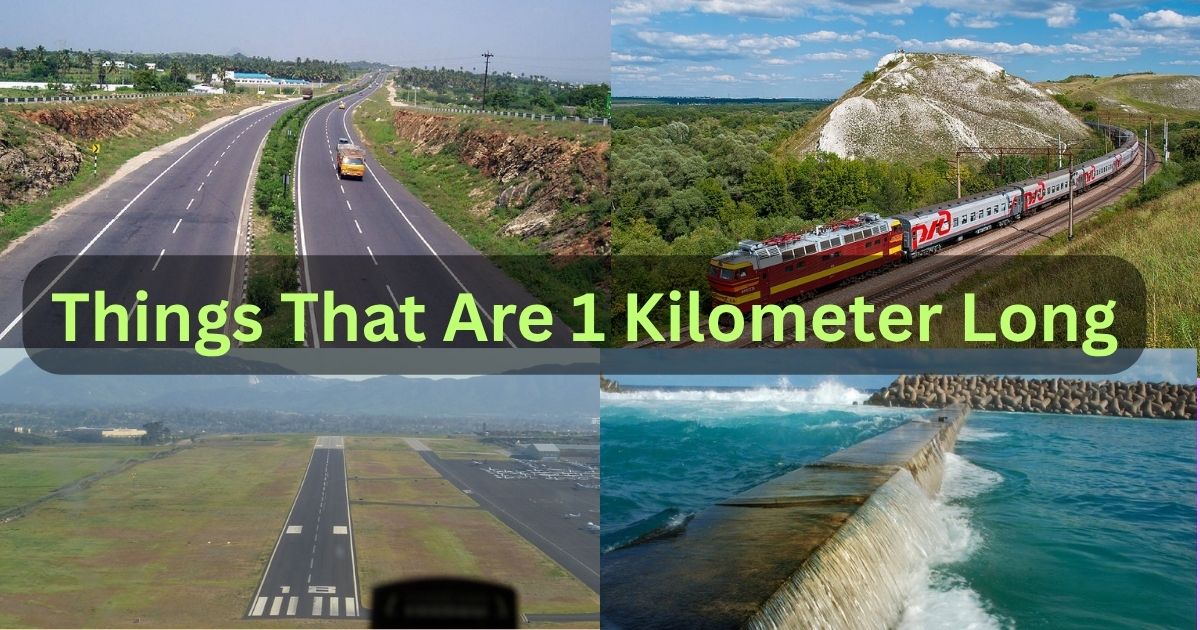How Long Is 1 Kilometer: A Complete Guide With Facts And Examples
A kilometer is a unit of measurement used to measure distance. It is common in many countries, especially when it comes to road signs and sports events. It is a simple way to understand and measure longer distances in daily life from tracking fitness goals to understanding geographical distances. 1 kilometer is equal to 0.62 miles. It matters in various fields, such as travel, sports, and science.
How Long Is A Kilometer?
One kilometer is equal to 1,000 meters. This distance is a common benchmark for fitness goals, whether it’s walking, jogging, or cycling. When driving, speed limits are usually posted in kilometers per hour (km/h) in many countries. This measurement helps travelers understand how far they can expect to go in a certain amount of time.

| Unit | Equivalent of 1 Kilometer |
| 1 Km in Meters (m) | 1,000 meters |
| 1Km in Centimeters (cm) | 100,000 cm |
| Millimeters (mm) | 1,000,000 mm |
| 1 Km in Miles | 0.621 miles |
| Inches (in) | 39,370.1 inches |
| Feet (ft) | 3,280.84 feet |
| Yards (yd) | 1,093.61 yards |
| Walking time | About 10–12 minutes at normal pace |
| Driving time | Around 1 minute at 60 km/h (37 mph) |
Things That Are 1 Kilometer Long
One kilometer is a common measurement for various distances. For instance, a standard track used for competitive running is 400 meters long. Runners complete two and a half laps to cover one kilometer. This distance is often used in races. Here are the following objects that are 1km long:
Runway at Small Airport
The runway at a small airport typically ranges from 1.2 to 2.5 kilometers in length. This size is sufficient for regional flights and smaller commercial jets. It is useful for safe takeoffs and landings. These are versatile hubs for various flying needs. It boosts local economies by attracting tourism and business travel. They often provide quicker access to remote areas and reduce travel time compared to larger airports.
Train
Trains have become a vital mode of transport. It often stretches up to 1 km in length. This size allows them to carry hundreds of passengers or tons of freight in a single trip. The long format is beneficial for transporting goods efficiently across vast distances. These are an eco-friendly alternative to trucks. It reduces road congestion and lowers carbon emissions. They can travel at high speeds, connecting cities and providing a smooth ride.
Airstrip
An airstrip is a vital component of aviation infrastructure. It often measures around 1 kilometer in length. This size is ideal for accommodating small to medium-sized aircraft. It is suitable for regional flights and private aviation. Airstrips can be constructed in various terrains, including rural areas, to enhance connectivity and accessibility. The primary use of an aerodrome is to facilitate takeoffs and landings. They serve as hubs for emergency services, agricultural operations, and recreational flying.
Road Segment
A road segment usually measures 1 kilometer. It is a vital component of transportation infrastructure. It serves as a link in the broader road network. It facilitates the movement of vehicles and pedestrians. This length is enough to connect neighborhoods, access essential services, and support local businesses. It plays a key role in traffic management by alleviating congestion and improving travel times.
Seawall
Seawalls are structures built along coastlines to protect against wave action and erosion. These barriers play a vital role in safeguarding coastal communities. A typical seawall can extend from 1 km to over 5 km. The primary use of seawalls is to shield the land from the relentless forces of the ocean. They absorb and deflect wave energy that prevents flooding and property damage.
A Soccer Field
A regulation soccer field is close to 1km. The length of a full-sized field ranges from 90 to 120 meters, with the maximum length being around 110 meters. This area facilitates players to showcase their skills and strategies while providing ample room for spectators to enjoy the action. Soccer fields are often located within parks. They are a social hub for families and friends.
The Length of a Football Field
A standard football field measures about 100 meters in length. If they line up ten of these fields end to end, they would cover roughly 1 kilometer. This site brings communities together for games and events.
The Distance of Four City Blocks
In urban areas, the distance between four city blocks typically amounts to about 1 kilometer. This distance is often walked by commuters and city dwellers. It provides a great benchmark for those looking to incorporate more walking into their routines.
The Sturdy Running Track
A standard running track is a perfect example of a 1km measurement. These tracks are made from durable materials. These are designed for athletes to train efficiently. They are often oval-shaped, with the inner lane measuring 400 meters. Runners can complete two and a half laps to reach that 1km mark. This setup encourages fitness and community involvement.
The Scenic Nature Trail
Another fascinating object that measures 1 km is a nature trail. These paths wind through parks. They offer a chance to explore local flora and fauna. A well-marked 1 km trail allows walkers and joggers to enjoy the beauty of nature while getting some exercise. Many parks use signs and markers along the way to help visitors gauge their distance. Nature trails also promote environmental awareness. They serve as a reminder of the importance of preserving green spaces.
The Expansive Dog Park
Dog parks can stretch to 1 km in length. It provides ample space for pets to roam and play. These parks often feature separate areas for large and small dogs. They ensure the safety of all furry friends. Here dogs can socialize and expend energy, which is crucial for their well-being. A 1km dog park encourages responsible pet ownership and strengthens community bonds among pet enthusiasts.
Conclusion
A kilometer is a unit of measurement. It is equal to 1,000 m. It is commonly used in countries that follow the metric system. Understanding kilometers helps to grasp distances better, whether you are traveling or measuring land. For example, a marathon race is about 42 kilometers long.
FAQs
How Big is a Kilometer?
A kilometer is equal to 1,000 meters. It is a little more than half a mile because 1 kilometer is about 0.62 miles. It is useful for measuring longer distances, like those found on roads or in sports events such as marathons.
How Far is 1 km?
1 kilometer is equal to 1,000 meters. If you walk at a normal pace, it takes about 10 to 15 minutes to cover 1 km. This distance is often used in running races and maps.

